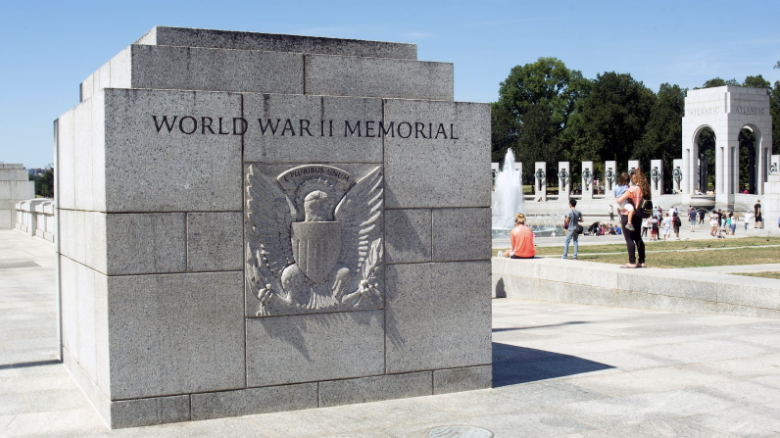
Canva World War II Trading Cards

Overview
Students will use Canva (canva.com) to incorporate learning they have done about key people of World War II to create trading cards that include pictures, text, and other information about their key person.
Learning Objectives
Students will:
-
know and understand key biographical information about important leaders from World War II.
-
be able to create a visual representation of their learning.
Vocabulary
Vocabulary Words:
- Duplicate: To duplicate means to make an exact copy of something.
- Sources: Sources are where someone gets information that can be analog or digital.
- Text Box: A text box is a box that you type in text (words, numbers, and symbols) online.
Pre-planning
To prepare for this lesson:
-
Background learning and knowledge about World War II would be helpful to teachers and students.
-
Make sure that students have access to http://canva.com. It might be helpful to create a Canva for Education account.
-
Decide how many cards you want the students to make and if you want them to print the cards or share them online.
-
Decide if you want students to work together. If so, they can share the project with each other by clicking on share in the top right corner of your design and adding their emails to the design.
-
Watch the following videos to help you and your students learn how to use Canva.
-
Canva YouTube Channel with lots of helpful Canva tutorials
-
-
A finished example of a project card can be found at bit.ly/wwtradingcards
Accommodations
See Accommodations Page and Charts on the 21things4student website in the Teacher Resources.
Steps
Directions for this activity:
-
Go to canva.com
-
Click on Create a Design, and click on custom size to make the width three inches and the height five inches. Then click Create New Design.
-
Use a history book available in a classroom or library or visit the website sparknotes.com/history/european/ww2/key-people to decide which four people (two from the Allies and two from Axis) you are going to make cards for in your project.
-
Decide your background by going to backgrounds and selecting a color/style you want to use.
-
Next, find a picture you want. You can do this in two ways. Either way, you will need to click on the photo and move it where you want.
-
The first way is to go to elements, then to photos, and search for a picture you want. Then click on it and move it to where you want it.
-
The second way is to find a picture from Google and right-click (ALT click on Chromebooks) on it. Then click Save Image As and click Save. Then go back to Canva, click on uploads, then upload files, then click on the picture. If you use this method, make sure you cite your sources on where you got the pictures.
-
-
Add the person's name and title by clicking on text inserting a text box, and typing the person’s name in the box.
-
When you finish that, then you click Add Page so that you can add details about the person including his name and title again, and important features such as height, weight, where they were born and died, and when they were born and died.
-
On that same side of the card, you can add another text box and add sources from which you found the information.
-
The next thing you are going to do is duplicate the pages. To do that, click on the thing with the plus sign in it that is in between a key and a garbage bin. That allows you to get the same exact copy of what you just did, and you can do the same steps you just did just for a different person. Do steps 5-9 for the remaining trading cards students create.
Assessment Options
Different options for assessing the students:
- Observations
- Check for understanding
- Following directions for the creation of the cards
- Information on cards is accurate and students cite their sources.
MITECS Competencies & ISTE Standards
MITECS: Michigan adopted the "ISTE Standards for Students" called MITECS (Michigan Integrated Technology Competencies for Students) in 2018.
Digital Citizen
2c. Students demonstrate an understanding of and respect for the rights and obligations of using and sharing intellectual property.
Knowledge Constructor
3a. Students plan and employ effective research strategies to locate information and other resources for their intellectual or creative pursuits.
3b. Students evaluate the accuracy, perspective, credibility and relevance of information, media, data or other resources.
3c. Students curate information from digital resources using a variety of tools and methods to create collections of artifacts that demonstrate meaningful connections or conclusions.
Creative Communicator
6a. Students choose the appropriate platforms and tools for meeting the desired objectives of their creation or communication.
6b. Students create original works or responsibly repurpose or remix digital resources into new creations.
6d. Students publish or present content that customizes the message and medium for their intended audiences.
Devices and Resources
Device: PC, Chromebook, Mac, iPad
Browser: Chrome, Safari, Firefox, Edge, ALL
Websites:
Canva
CONTENT AREA RESOURCES
ELA
Students will cite sources and find information.
This project can be used alongside text or trade books and include information about characters in the book information found online or other non-fiction resources.
Integrated Arts
Making designs that are attractive while following the guidelines for the project.
Social Studies
Students will incorporate prior knowledge information regarding a World War II unit and support specific people students are learning about.
Credits
This task card was created by Andrew Tomashewsky, Carrollton Public Schools, April 2023.


